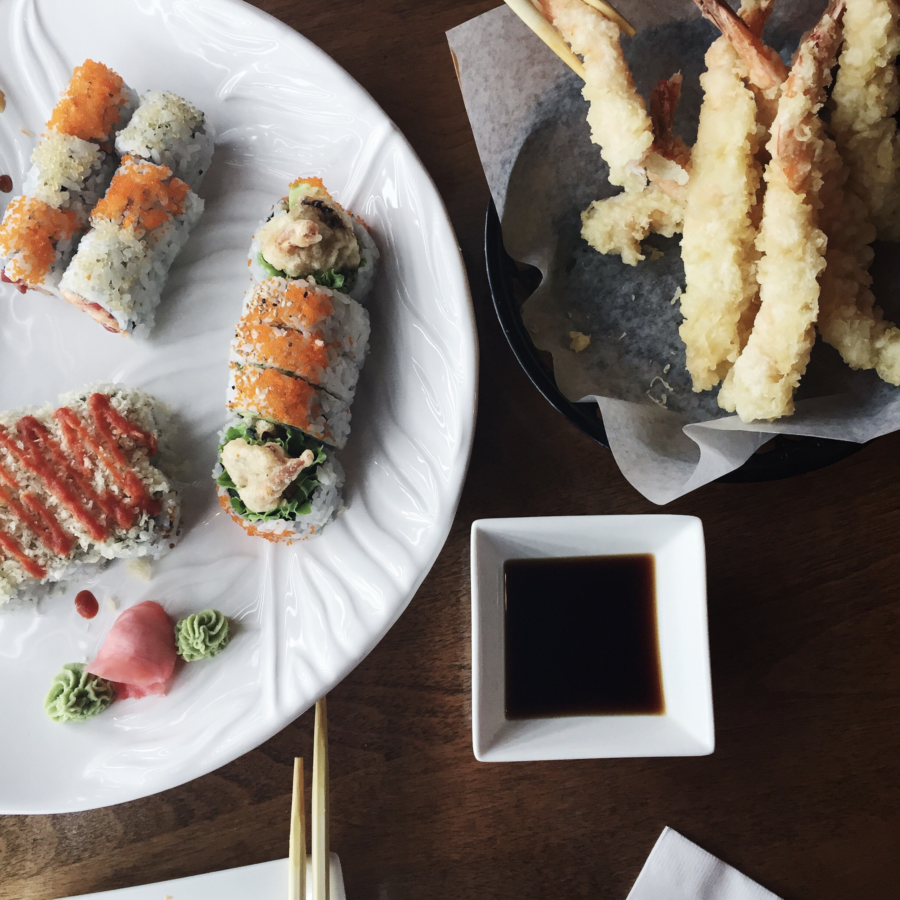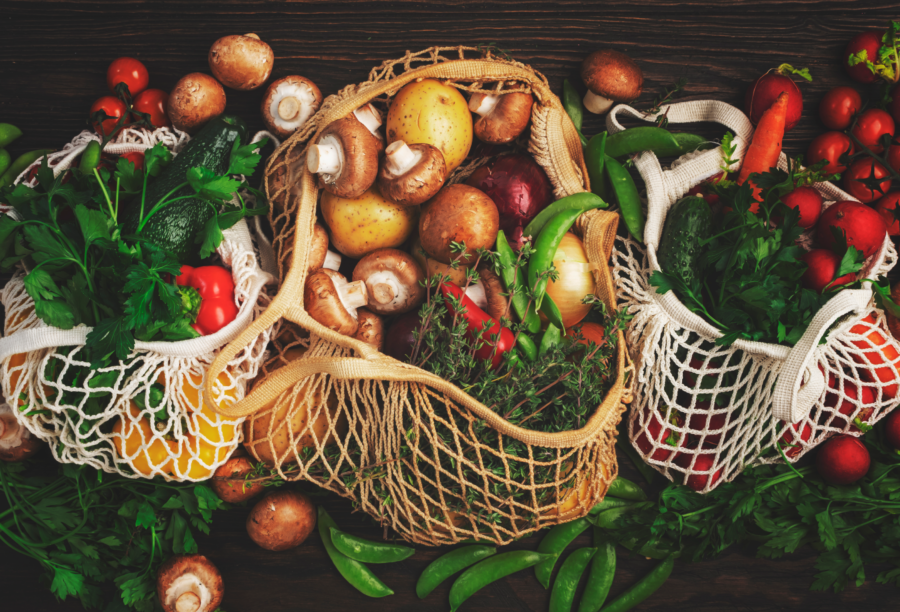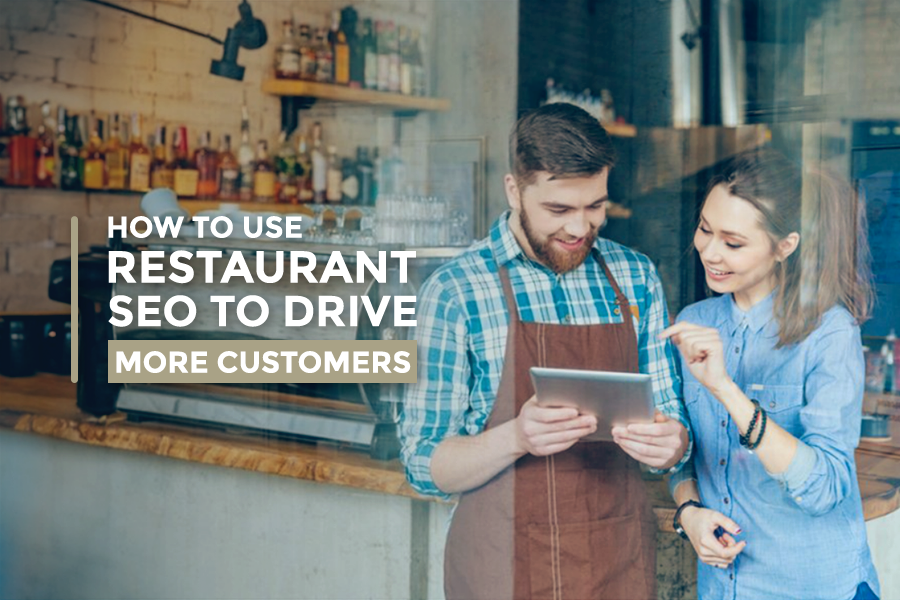In today’s highly competitive digital landscape, having a robust online presence is crucial for the success of any business, including restaurants. With the increasing reliance on search engines to find local businesses and make dining decisions, restaurant owners must prioritize search engine optimization (SEO) to enhance their online visibility.
By implementing effective SEO strategies, restaurant owners can drive more website traffic, improve their search engine rankings, and ultimately attract more customers to their establishments. This comprehensive guide will explore the world of restaurant SEO, providing valuable insights, tips, and techniques to boost your online visibility and drive more customers to your restaurant.
An Essential Ingredient for Success
To achieve long-term success in the highly competitive restaurant industry, it’s essential to have a robust online presence that stands out from the crowd. This is where restaurant SEO comes into play. Restaurant SEO refers to optimizing your restaurant’s website and online presence to rank higher in search engine results pages (SERPs) when potential customers search for relevant keywords and phrases related to your restaurant.
Implementing restaurant SEO strategies helps you improve your website’s visibility, increase organic traffic, and ultimately attract more customers to your establishment. By appearing on the first page of search engine results, you can significantly increase your chances of being discovered by potential diners actively searching for a restaurant in your area.
Why Does Restaurant SEO Matter?
In today’s digital age, most customers turn to search engines like Google to find local businesses, including restaurants. Studies have shown that approximately 93% of online experiences begin with a search engine. When potential customers search for terms like “best restaurants near me” or “Italian restaurants in Los Angeles,” they are presented with search results. The higher your restaurant appears on that list, the more likely users will click through to your website and eventually visit your establishment.
Restaurant SEO helps you improve your rankings in search engine results, making it more likely for your website to be discovered by potential customers. By optimizing your website for relevant keywords and providing valuable and engaging content, you can increase your online visibility, drive targeted traffic to your website, and ultimately boost your restaurant’s success.
The Benefits of Restaurant SEO
Implementing effective restaurant SEO strategies offers numerous benefits for your establishment. Let’s explore some of the key advantages:
- Increased Online Visibility: By optimizing your website for relevant keywords and phrases, you can improve your search engine rankings and increase your online visibility. More potential customers will find your restaurant when searching for local dining options.
- Higher Organic Traffic: As your website’s visibility improves, you will experience a significant increase in organic traffic. Organic traffic refers to the visitors who find your website through unpaid search results. By attracting more organic traffic, you can reach a larger audience and increase your chances of converting visitors into customers.
- Targeted Audience Reach: Restaurant SEO allows you to target specific keywords and phrases relevant to your restaurant. By aligning your website with your potential customers’ search terms, you can attract highly targeted traffic that is more likely to convert into paying customers.
- Cost-Effective Marketing: Compared to traditional marketing methods, restaurant SEO offers a cost-effective way to promote your establishment. While traditional advertising can be expensive and often reaches a broad audience with varying interest levels, SEO enables you to focus on attracting users actively searching for dining options.
- Long-Term Results: Unlike some short-term marketing campaigns, the results of effective restaurant SEO strategies can be long-lasting. You can consistently optimize your website and provide valuable content to maintain high search engine rankings and continue attracting customers.
- Enhanced User Experience: A fundamental aspect of restaurant SEO is providing a seamless and user-friendly experience on your website. By optimizing your website’s structure, navigation, and load times, you can improve the overall user experience and increase the likelihood of visitors staying on your site and exploring your offerings.
Now that we have explored the benefits of restaurant SEO, let’s dive into the actionable strategies and techniques you can implement to boost your online visibility and drive more customers to your restaurant.
Understanding Keywords: The Foundation of Restaurant SEO

Keywords form the foundation of any effective SEO strategy. They are the search terms and phrases that potential customers use when looking for restaurants online. By understanding and targeting the right keywords, you can position your restaurant website to appear prominently in search engine results pages (SERPs) and attract highly targeted traffic. Let’s look at the keywords you should consider when optimizing your restaurant’s website.
1. Broad Keywords
Broad keywords are general terms or phrases that describe your restaurant’s cuisine or category. Examples of broad keywords include “Italian restaurant,” “Mexican cuisine,” or “Asian fusion restaurant.” While these keywords may have a high search volume, they are also highly competitive. Storing well for broad keywords can be challenging, especially in competitive markets. However, they are still valuable to include in your SEO strategy, as they help establish your restaurant’s relevance to a particular cuisine or category.
2. Long-Tail Keywords
Long-tail keywords are more specific phrases that users might search for when looking for a particular restaurant or dish. These keywords typically have a lower search volume but are less competitive. Long-tail keywords allow you to target a specific audience and attract visitors more likely to convert into customers. Examples of long-tail keywords include “authentic Italian pizza in Los Angeles” or “best seafood restaurant near Santa Monica.”
3. Local Keywords
Local keywords are essential for restaurant SEO, as they help you target customers in your specific geographical area. Including location-specific keywords in your website, content allows search engines to understand that your restaurant is relevant to users searching for dining options in that area. Examples of local keywords include “Italian restaurant in Los Angeles” or “steakhouse in Beverly Hills.” By targeting local keywords, you can increase your chances of appearing in local search results and attracting customers looking for nearby restaurants.
4. Branded Keywords
Branded keywords are search terms that include your restaurant’s name or variations. For example, if your restaurant is called “Pasta Paradise,” a branded keyword could be “Pasta Paradise restaurant.” Branded keywords are essential for establishing your restaurant’s online presence and driving traffic from users who are already familiar with your establishment. It’s crucial to optimize your website for branded keywords to ensure that users searching specifically for your restaurant can easily find your website and access the information they need.
5. Competitor Keywords
Analyzing your competitors’ online presence and the keywords they target can provide valuable insights for your restaurant’s SEO strategy. By identifying the keywords your competitors rank well for, you can gain a competitive advantage and adjust your strategy accordingly. Tools like Google Keyword Planner or SEMrush can help you identify competitor keywords and determine their search volume and competition level.
Now that you understand the different keywords to consider, let’s move on to the next section, which explores on-page SEO techniques for optimizing your restaurant’s website.

On-Page SEO for Restaurants: Optimizing Your Website for Success
On-page SEO refers to the optimization techniques implemented directly on your restaurant’s website to improve its visibility in search engine results. By optimizing various on-page elements, you can send clear signals to search engines about your restaurant’s relevance and improve your chances of ranking well for targeted keywords. This section will discuss the key on-page SEO techniques you should implement on your restaurant’s website.
1. Meta Tags
Meta tags are snippets of text that provide information about your web page to search engines and website visitors. Two essential meta tags to focus on are the meta title and meta description.
The meta title appears as the clickable headline in search engine results. It should accurately describe the content of your web page and include your target keyword. Limit the meta title to around 60 characters to ensure it displays correctly in search results.
Example Meta Title: “Authentic Italian Cuisine in Los Angeles – Pasta Paradise Restaurant”
The meta description summarizes your web page’s content that appears below the meta title in search results. It should be compelling and informative and entice users to click through to your website. Include your target keyword naturally within the meta description, and aim for a length of around 160 characters.
Example Meta Description: “Experience the finest authentic Italian cuisine in Los Angeles at Pasta Paradise Restaurant. Indulge in our delicious pasta dishes, homemade sauces, and warm ambiance. Book a table now!”
By crafting compelling meta tags that incorporate your target keyword, you can improve your click-through rates from search engine results and attract more visitors to your website.
2. Header Tags
Header tags (H1, H2, H3, etc.) are HTML elements that structure the content on your web page. Search engines use header tags to understand the hierarchy and importance of the content on your page. It’s essential to use header tags properly and include your target keywords naturally within them.
The H1 tag should be used for the main heading of your web page and should incorporate your target keyword. This tag signals the topic of your page to search engines and visitors.
Example H1 Tag: “<h1>Discover the Best Italian Restaurant in Los Angeles – Pasta Paradise</h1>”
Subheadings (H2, H3, etc.) should be used to break your content into relevant sections. They provide structure and improve the readability of your content. Incorporate variations of your target keyword in the subheadings where appropriate.
Example H2 Tag: “<h2>Experience Authentic Italian Cuisine</h2>”
Using proper header tags helps with SEO and enhances the user experience by making your content more scannable and readable.
3. URL Structure
Your website’s URL structure should be clean, concise, and descriptive. Avoid using long strings of numbers or irrelevant characters in your URLs. Instead, include relevant keywords that describe the content of the page.
By incorporating keywords in your URLs, you provide search engines with additional information about your web page’s content and improve its chances of ranking well for relevant searches.
4. Keyword Optimization in Content
Creating high-quality, keyword-rich content is crucial for restaurant SEO. Each page on your website should have unique, informative, and engaging content that incorporates your target keywords naturally. Avoid keyword stuffing, which refers to overusing keywords in an unnatural or spammy manner. Instead, focus on providing valuable information that answers your customers’ queries and showcases your restaurant’s unique offerings.
Include your target keyword in the first paragraph of your content and throughout the body of the text. Aim for a keyword density of around 1-2% to maintain a natural flow of the content.
Example Sentence: “At Pasta Paradise, we take pride in serving the best authentic Italian cuisine in Los Angeles.”
Remember, while optimizing your content for search engines is important, you should ultimately prioritize creating valuable, informative, and engaging content for your website visitors.
5. Image Optimization
Images play a vital role in enhancing the visual appeal of your restaurant’s website. However, optimizing your images for search engines is crucial to ensure they contribute to your overall SEO efforts. Here are some key image optimization techniques to follow:
a. File Size Optimization: Compress your images without sacrificing quality to reduce their file size. Large image files can slow down your website’s load time, negatively impacting the user experience and search engine rankings. Use image compression tools like TinyPNG or Squoosh to optimize your image files.
b. Alt Tags: Alt tags provide textual descriptions of images for search engines and visually impaired users. Include relevant keywords in your alt tags while accurately describing the image’s content. Alt tags also serve as a fallback when images fail to load.
Example Alt Tag: “<img src=”pasta-dish.jpg” alt=”Delicious pasta dish at Pasta Paradise – Best Italian Restaurant in Los Angeles”>”
By optimizing your images, you can improve your website’s overall performance, user experience, and search engine rankings.
6. User Experience Optimization
User experience (UX) is a critical factor in search engine rankings. Search engines strive to provide users with the best possible results, and websites that offer a seamless, user-friendly experience are rewarded with higher rankings. Here are some UX optimization tips for your restaurant’s website:
- Mobile-Friendliness: With most internet users accessing websites from mobile devices, ensuring your website is mobile-friendly is essential. Responsive design ensures that your website adapts to different screen sizes, providing a seamless experience for mobile users.
- Page Speed: Optimize your website’s load time to provide a fast and smooth browsing experience. Compress images, minify CSS and JavaScript files, and leverage browser caching to reduce page load times.
- Navigation and Structure: Ensure your website’s navigation is intuitive and easy to use. Create clear and logical menu structures, use breadcrumbs, and include a search function to help users quickly find the information they need.
- Readability: Use legible font sizes and styles, appropriate color contrasts, and sufficient spacing between paragraphs to enhance the readability of your content.
By optimizing user experience, you can improve your website’s engagement metrics, reduce bounce rates, and increase the likelihood of visitors staying on your site and converting into customers.
Now that we’ve covered the essential on-page SEO techniques, let’s move on to the next section, which explores off-page SEO strategies for restaurant websites.

Off-Page SEO: Building Your Restaurant’s Online Reputation
Off-page SEO refers to the strategies implemented outside of your website to improve its online visibility and reputation. Off-page SEO focuses on building high-quality backlinks, establishing your brand’s authority, and enhancing your restaurant’s reputation online. This section will discuss the key off-page SEO strategies you should consider for your restaurant’s website.
1. Link Building
Link building is a crucial aspect of off-page SEO. It involves acquiring high-quality backlinks from reputable websites to your restaurant’s website. Backlinks are like votes of confidence from other websites, indicating to search engines that your website is valuable and trustworthy.
Here are some effective link-building techniques for your restaurant:
- Local Directories: Submit your restaurant’s information to local online directories such as Google My Business, Yelp, TripAdvisor, and Zomato. Ensure your NAP (Name, Address, Phone Number) details are consistent across all directories.
- Guest Blogging: Contribute guest posts to relevant food and lifestyle blogs or local publications. Include links back to your website within the content or author bio section. Guest blogging lets you showcase your expertise, build brand awareness, and acquire quality backlinks.
- Influencer Collaborations: Partner with influencers or food bloggers in your area to promote your restaurant. They can feature your establishment in their content or write reviews, linking to your website.
- Local Citations: Ensure your restaurant’s NAP details are consistent across various online platforms, including local directories, review sites, and social media profiles. Consistent citations help search engines associate your business with the correct location and boost your local SEO efforts.
Remember, when building backlinks, focus on quality rather than quantity. Aim for backlinks from reputable and relevant websites within the food and hospitality industry.
2. Online Reviews and Reputation Management
Online reviews play a significant role in shaping a restaurant’s reputation and influencing customers’ dining decisions. Positive reviews attract new customers and improve your website’s credibility and search engine rankings. Here are some tips for managing online reviews and building a positive reputation:
- Encourage Reviews: Proactively encourage satisfied customers to leave reviews on platforms like Google, Yelp, TripAdvisor, and Facebook. Place review reminder cards or QR codes on tables or include a call-to-action in your email newsletters.
- Respond to Reviews: Engage with your customers by responding to positive and negative reviews. Thank customers for their positive feedback and address any concerns or issues from negative reviews. Show that you value customer feedback and are committed to providing exceptional dining experiences.
- Monitor Online Mentions: Regularly monitor online mentions of your restaurant on social media, review sites, and other platforms. Respond to customer inquiries or comments promptly and professionally.
- Reputation Management: Implement a reputation management strategy to maintain a positive online image. Address negative reviews or false information promptly and transparently. Provide exceptional customer experiences to minimize negative reviews and build a strong reputation.
By actively managing your restaurant’s online reviews and reputation, you can build trust with potential customers, increase your restaurant’s visibility, and improve your search engine rankings.
3. Social Media Engagement
Social media platforms offer excellent opportunities for restaurant marketing and building an online presence. Engaging with your audience on social media can help increase brand awareness, drive traffic to your website, and boost your restaurant’s reputation. Here are some tips for effective social media engagement:
- Choose the Right Platforms: Identify the social media platforms where your target audience is most active. Focus your efforts on platforms like Facebook, Instagram, Twitter, and YouTube, depending on your restaurant’s niche and target demographic.
- Share Engaging Content: Regularly post high-quality, visually appealing content that showcases your restaurant’s ambiance, dishes, and events. Encourage user-generated content by featuring customer photos or running contests and giveaways.
- Respond to Comments and Messages: Monitor your social media channels and promptly respond to comments, messages, and reviews. Engage with your audience, answer their questions, and address any concerns or feedback they may have.
- Collaborate with Influencers: Partner with local influencers or food bloggers to create engaging content and promote your restaurant. Influencers can help increase your reach and attract new followers and customers.
- Social Sharing Buttons: Include social sharing buttons on your website and blog posts to make it easy for visitors to share your content on social media platforms. This can help increase brand visibility and drive traffic back to your website.
By actively engaging with your audience on social media, you can build a loyal community of followers, generate buzz around your restaurant, and enhance your online reputation.
Now that we’ve covered the key off-page SEO strategies let’s move on to the next section, which explores local SEO techniques for restaurant owners.

Local SEO for Restaurants: Dominating Your Local Market
Local SEO is vital to restaurant marketing, as it helps you target customers in your geographical area. Local SEO techniques focus on optimizing your online presence to rank well in local search results and attract customers actively searching for restaurants in your vicinity. This section will discuss the critical local SEO strategies you should implement for your restaurant.
1. Google My Business Optimization
Optimizing your Google My Business (GMB) listing is vital for local SEO success. Claim and verify your listing, provide accurate information, select relevant categories and attributes, write compelling descriptions, upload high-quality photos and videos, and encourage customer reviews. This helps improve your visibility in local search results and drives targeted traffic to your website.
2. Local Content Optimization
Creating localized content is crucial for improving local SEO. Use location-specific keywords throughout your website, create dedicated landing pages for each location you serve, publish content about local events and promotions, and write blog posts about local food trends. Doing so can enhance your website’s relevance to local searches and attract more local customers.
3. Online Local Directories and Review Sites
Listing your restaurant on online directories and review sites such as Yelp, TripAdvisor, and Zomato is beneficial for local visibility. Claim your listings, provide detailed information, add high-quality photos, encourage customer reviews, and respond promptly and professionally. This boosts your local SEO efforts, increases brand awareness, and helps attract more customers to your area.
Frequently Asked Questions (FAQs) About Restaurant SEO
Q1. How long does it take to see results from restaurant SEO?
A1. SEO is a long-term strategy that takes time to see significant results. While some improvements can be seen in a few months, it usually takes 6-12 months to see substantial improvements in search engine rankings and organic traffic.
Q2. Should I hire an SEO agency for my restaurant?
A2. Hiring an experienced SEO agency can be beneficial, as they have the expertise and resources to implement effective SEO strategies for your restaurant. However, if you have the time and knowledge, you can also learn and implement SEO techniques.
Q3. Can social media help with restaurant SEO?
A3. While social media signals are not direct ranking factors, a strong social media presence can indirectly impact your restaurant’s SEO. Engaging with your audience on social media, sharing valuable content, and building brand awareness can drive traffic to your website, improve engagement metrics, and enhance your online reputation.
Q4. How important are online reviews for restaurant SEO?
A4. Online reviews are crucial for restaurant SEO. Positive reviews attract more customers and contribute to your website’s credibility and search engine rankings. Encourage your satisfied customers to leave reviews on platforms like Google, Yelp, TripAdvisor, and Facebook, and respond to reviews promptly to show your engagement and commitment to customer satisfaction.
Q5. How can I track the success of my restaurant’s SEO efforts?
A5. Monitoring and analyzing key metrics is essential to track the success of your restaurant’s SEO. Utilize tools like Google Analytics and Google Search Console to track organic traffic, keyword rankings, bounce rates, and conversion rates. Regularly review these metrics and make adjustments to your SEO strategy as needed.
Q6. Should I focus on local SEO or general SEO for my restaurant?
A6. Both local SEO and general SEO are important for restaurant owners. Local SEO helps you target customers in your geographical area and attract local traffic, while general SEO helps improve your online visibility and attract a broader audience. It’s essential to strike a balance between the two and tailor your strategies to your specific goals and target audience.
By implementing effective restaurant SEO strategies, you can boost your online visibility, attract more customers, and stay ahead of the highly competitive restaurant industry.
Conclusion
In today’s digital age, restaurant SEO is essential for success. By implementing effective SEO strategies, you can boost your online visibility, increase organic traffic, and attract more customers to your establishment. Focus on understanding and targeting relevant keywords, optimizing your website’s on-page elements, building a strong online reputation through off-page SEO, and dominating your local market with local SEO techniques.
Remember, SEO is an ongoing process that requires consistent effort and adaptation. True North Social can help you stay updated with the latest SEO trends and algorithm changes, monitor your website’s performance, and adjust your strategies as needed. With dedication and the right SEO approach, you can enhance your restaurant’s online presence, drive more customers, and thrive in the competitive restaurant industry.
